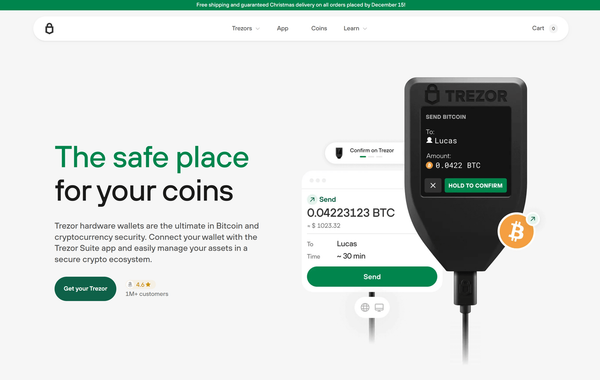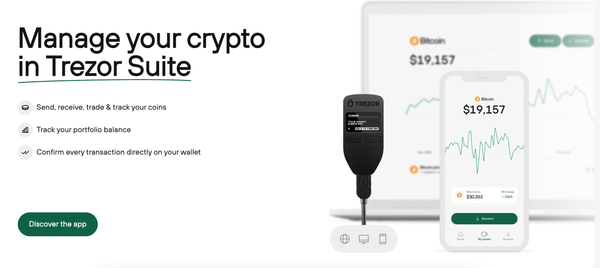Trezor Bridge: The Essential Gateway to Secure Crypto Management

In the rapidly evolving world of cryptocurrency, hardware wallets have become the gold standard for security. Among the most trusted names is Trezor, a device renowned for safeguarding digital assets offline. However, the hardware wallet alone isn’t enough—you need a seamless connection between your device and your computer. That’s where Trezor Bridge comes in. This article explores everything about Trezor Bridge, from installation and setup to troubleshooting and security benefits, helping both beginners and seasoned users navigate their crypto management journey efficiently.
What is Trezor Bridge?
Trezor Bridge is a small but crucial software component developed by SatoshiLabs, the creators of Trezor devices. It serves as a communication bridge between your Trezor hardware wallet and the Trezor web-based applications, such as Trezor Suite. Without Trezor Bridge, your computer might not recognize your Trezor device properly, making transactions, wallet management, or firmware updates impossible.
Think of it like a translator between your hardware wallet and your operating system. Whether you’re using Windows, macOS, or Linux, Trezor Bridge ensures that your device communicates efficiently and securely with Trezor’s online interface.
Why You Need Trezor Bridge
- Enhanced Security: By connecting your Trezor device through Trezor Bridge instead of browser extensions alone, your private keys remain securely stored on your hardware wallet. The bridge ensures that no sensitive information is exposed to your computer or the internet.
- Seamless Connectivity: Trezor Bridge eliminates compatibility issues between your Trezor device and browsers. Some browsers, especially after recent updates, may have restrictions that block direct USB connections. Trezor Bridge handles these technicalities in the background.
- Firmware Updates: Keeping your Trezor device firmware up-to-date is vital for security. Trezor Bridge allows your device to safely download and install firmware updates from Trezor’s servers, preventing potential vulnerabilities.
- Cross-Platform Support: Whether you switch from Windows to macOS or Linux, Trezor Bridge ensures that your device works smoothly without requiring multiple software versions.
How to Install Trezor Bridge
Installing Trezor Bridge is simple and straightforward:
- Download: Go to the official Trezor website (trezor.io/bridge
- and download the correct version for your operating system. Avoid third-party sources to prevent malware risks.
Setting Up Trezor Bridge for the First Time
After installing Trezor Bridge, follow these steps for optimal setup:
- Launch Trezor Suite: This desktop application is the hub for all Trezor activities.
- Check Device Recognition: Your Trezor should appear in the app. If not, ensure that Trezor Bridge is running in the background.
- Create or Recover Wallet: You can either initialize a new wallet or restore an existing one using your recovery seed. Trezor Bridge ensures this process is secure and uninterrupted.
- Test Transaction: For first-time users, sending a small amount of crypto can verify that your device and bridge are functioning correctly.
Troubleshooting Common Trezor Bridge Issues
Even with a seamless installation, users may occasionally encounter issues. Here’s how to resolve them:
- Device Not Recognized: Restart your computer, reconnect the Trezor, and ensure Trezor Bridge is running. Sometimes, antivirus software can block USB connections—temporarily disable it if needed.
- Browser Compatibility Issues: Although Trezor Bridge works best with Trezor Suite, certain browser updates can interfere with direct web connections. Using Trezor Suite or updating Trezor Bridge to the latest version usually resolves this.
- Firmware Update Fails: Ensure your internet connection is stable and that your Trezor device has enough battery if using a model with a battery. Retry the update after restarting both the device and the computer.
- Reinstallation: If persistent problems occur, uninstall Trezor Bridge and reinstall the latest version from the official site. This usually resolves conflicts with previous installations.
Security Considerations
Trezor Bridge is designed with security as a priority. It uses encrypted communication between your computer and the device, ensuring that private keys never leave your hardware wallet. Here are a few tips to maximize security:
- Always download Trezor Bridge from the official site. Avoid unofficial downloads that may contain malware.
- Keep Trezor Suite updated to the latest version to benefit from security patches.
- Verify firmware authenticity during updates. Trezor devices will display a verification prompt to prevent tampering.
- Avoid public computers for connecting your Trezor device, as these may carry security risks.
Advantages Over Alternative Methods
Before Trezor Bridge, users relied on browser extensions to connect their Trezor devices. While functional, browser extensions posed certain limitations:
- Less reliable across different browsers.
- Prone to security vulnerabilities if the browser is compromised.
- Limited in handling firmware updates or device management.
Trezor Bridge addresses all these concerns, providing a robust, secure, and universally compatible method for Trezor connectivity.
Conclusion
Trezor Bridge may seem like a small piece of software, but its role in the Trezor ecosystem is indispensable. It ensures that your hardware wallet communicates securely with your computer, enables firmware updates, and resolves compatibility issues across platforms and browsers. By installing and using Trezor Bridge, cryptocurrency enthusiasts can manage their digital assets confidently, knowing that their private keys remain secure.
Whether you’re a beginner or a veteran crypto trader, Trezor Bridge is the gateway to a seamless, secure, and user-friendly experience. Ensure you install it from the official site, keep it updated, and use it alongside Trezor Suite for the best results. For further guidance and downloads, visit the official Trezor Bridge page
- Install: Run the installer and follow the on-screen instructions. On Windows, you may be prompted for administrator permission. macOS users may need to allow installation from identified developers.
- Connect Your Device: Plug in your Trezor device using a USB cable. The Trezor Suite application should automatically recognize the device via the bridge.
- Verify: Ensure that the connection is successful. The Trezor Suite interface will confirm your device is connected, allowing you to manage wallets, send or receive cryptocurrency, and update firmware.



